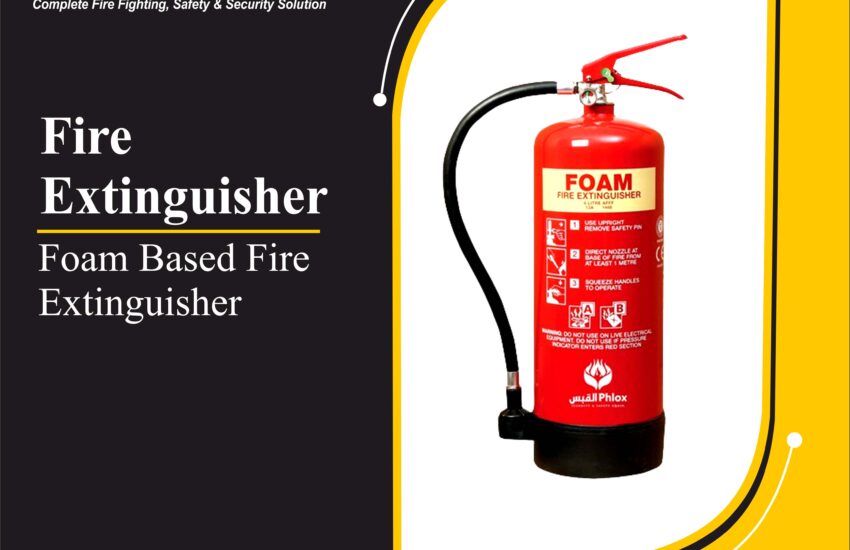Foam Based Fire Extinguisher, also known as an AFFF fire extinguisher (Aqueous Film Forming Foam), is designed to combat Class A and Class B fires. It works by forming a blanket of foam over the burning material, cutting off the fire’s oxygen supply and cooling the surface to prevent re-ignition.
These extinguishers are commonly used in warehouses, petrol stations, garages, workshops, and storage facilities, especially where flammable liquids are present.
How Does a Foam Fire Extinguisher Work?
Foam fire extinguishers spray a foam solution that expands upon contact with air. This foam creates a seal over flammable liquid surfaces and penetrates porous materials like paper or fabric, effectively suppressing both Class A and Class B fires.
- For Class A fires: Foam cools and soaks the burning materials
- For Class B fires: Foam forms a film that prevents oxygen from reaching the fuel
Classes of Fire It Can Extinguish
🔥 Class A Fires:
- Involve solid combustibles like:
- Wood
- Paper
- Fabric
- Plastic
🔥 Class B Fires:
- Involve flammable liquids like:
- Petrol
- Diesel
- Paint
- Oil
- Solvents
⚠️ Not suitable for:
- Electrical fires (Class C)
- Cooking oil fires (Class K/F)
Common Applications of Foam Fire Extinguishers
Foam extinguishers are widely used in areas where flammable solids and liquids are present:
- Fuel stations
- Warehouses
- Industrial units
- Car workshops
- Storage facilities
- Airports and hangars
- Commercial buildings
- Manufacturing plants
Advantages of Foam Fire Extinguishers
Effective on both solids and flammable liquids
Prevents re-ignition with sealing action
Provides cooling effect to suppress heat
Suitable for indoor and outdoor use
Available in portable and wheeled units
Disadvantages
Not safe for electrical fires
Can leave wet, sticky residue
Requires regular maintenance
Not suitable for high-voltage areas
How to Use a Foam Fire Extinguisher – PASS Method
- Pull the safety pin
- Aim at the base of the fire
- Squeeze the handle
- Sweep from side to side
- For liquid fires, avoid spraying directly at the surface to prevent splashing.
- For solid fires, aim directly at the base.
Maintenance & Safety Guidelines
- Conduct monthly visual checks
- Ensure pressure gauge is in the green zone
- Annual servicing by certified professionals
- Refill immediately after use
- Keep in accessible, marked locations
Safety Compliance & Standards
When choosing foam extinguishers, ensure they meet standards such as:
- NFPA (National Fire Protection Association)
- ISO 9001 certification
- BIS certification (India)
- EN3 compliance (Europe)
Proper training should be provided for all users to handle foam extinguishers safely and effectively.
Conclusion
A foam based fire extinguisher is a highly effective and versatile firefighting solution for environments with flammable solids and liquids. Its dual action of cooling and smothering makes it ideal for preventing re-ignition and containing dangerous fire situations quickly.


